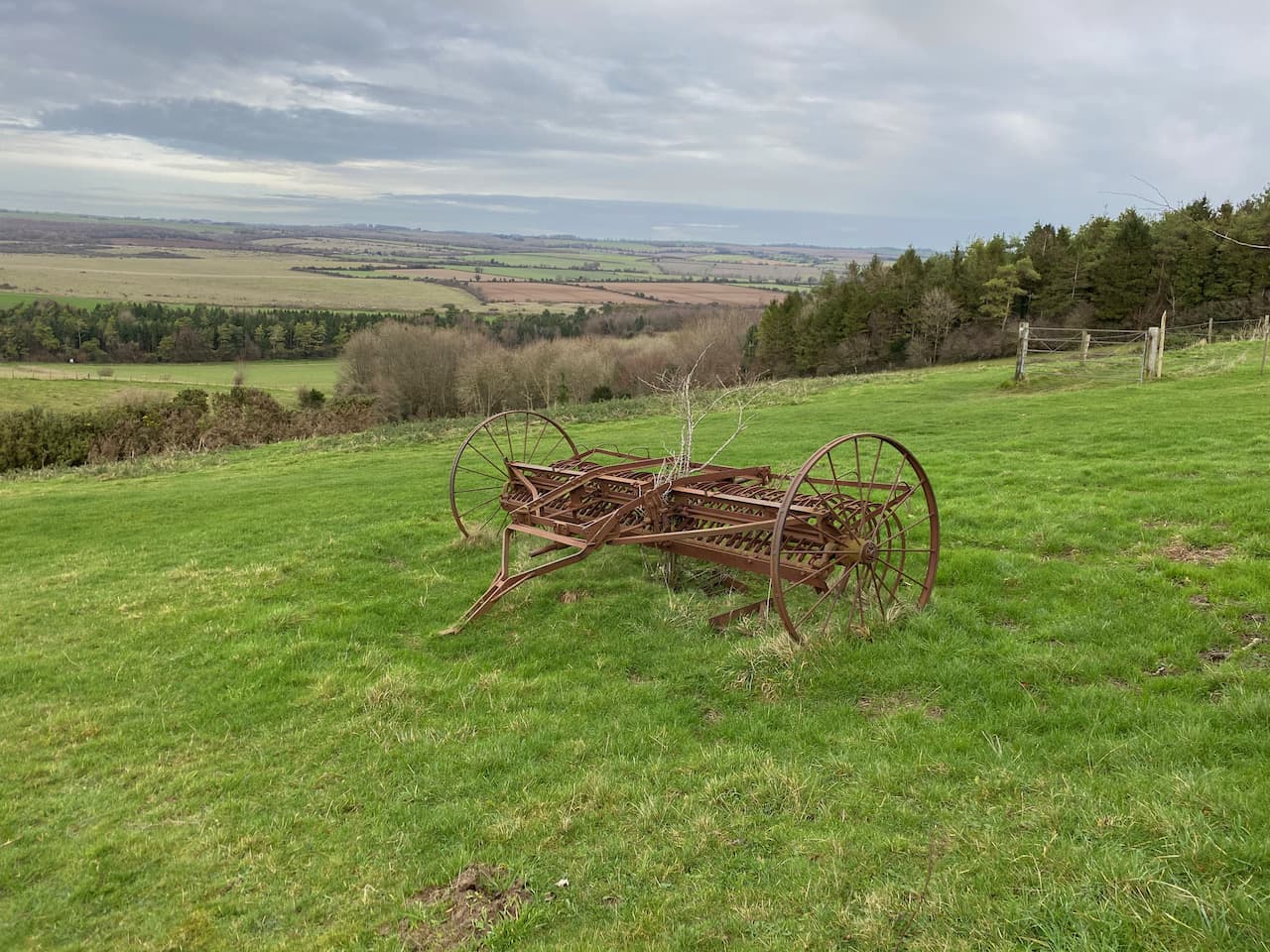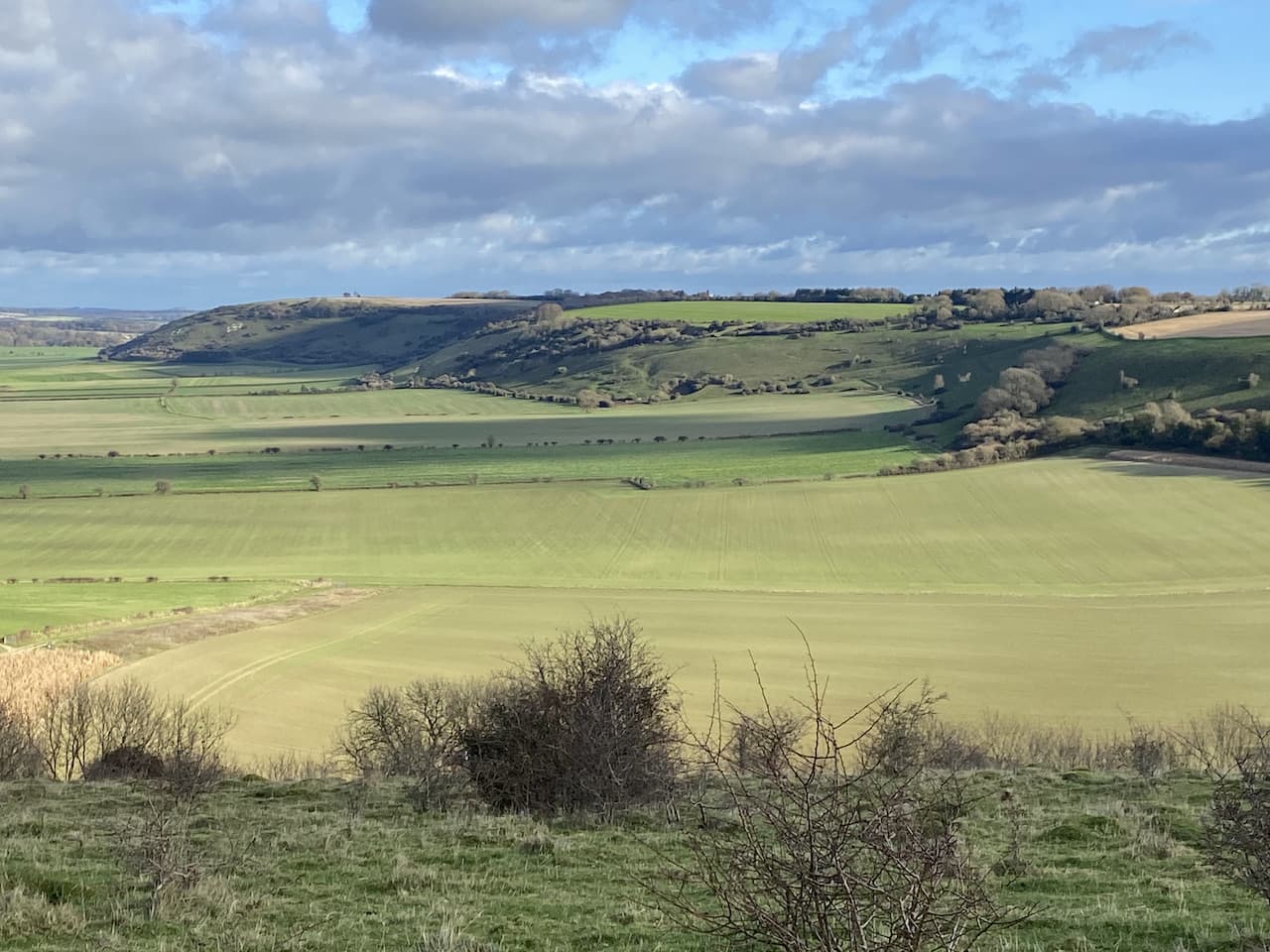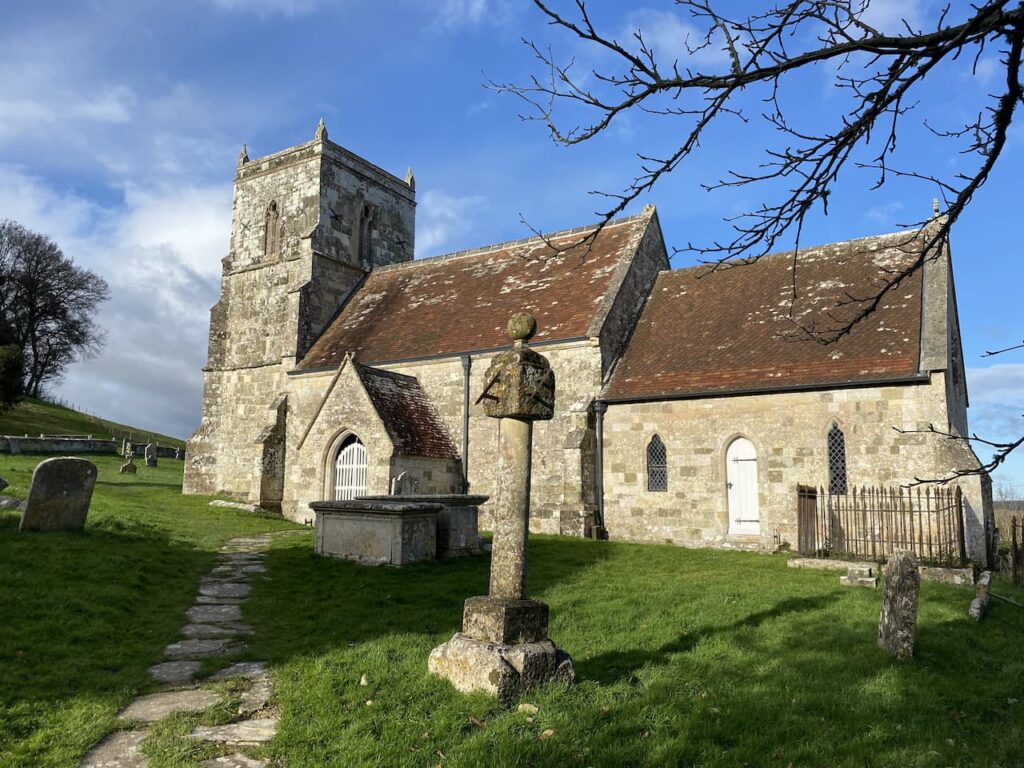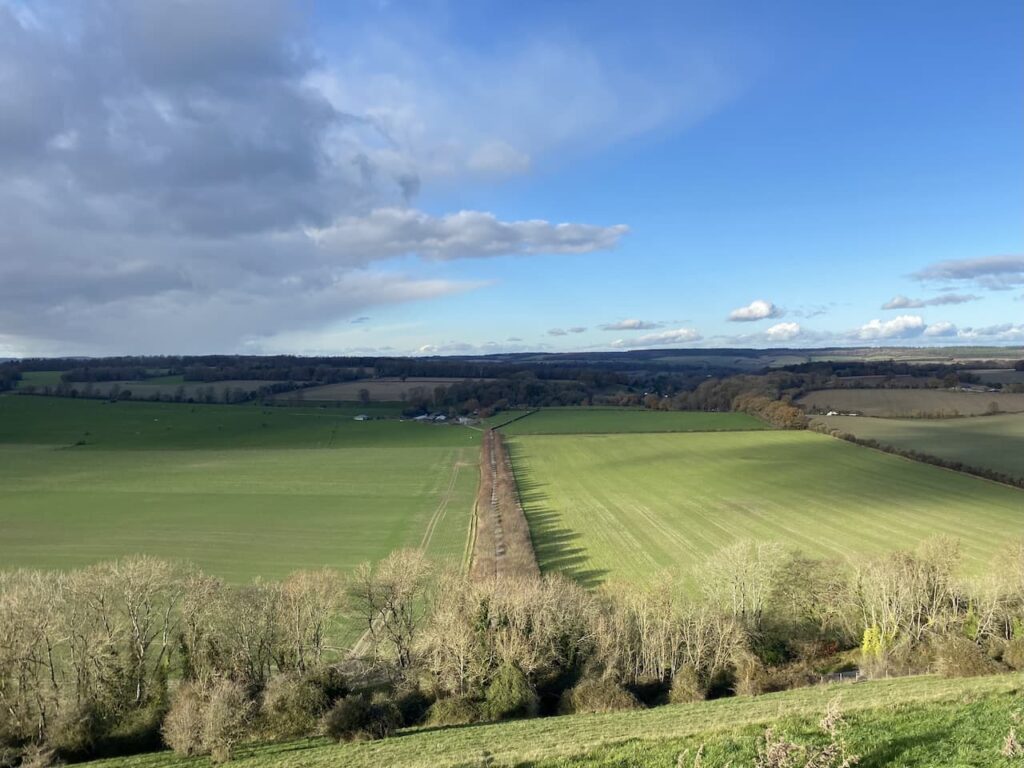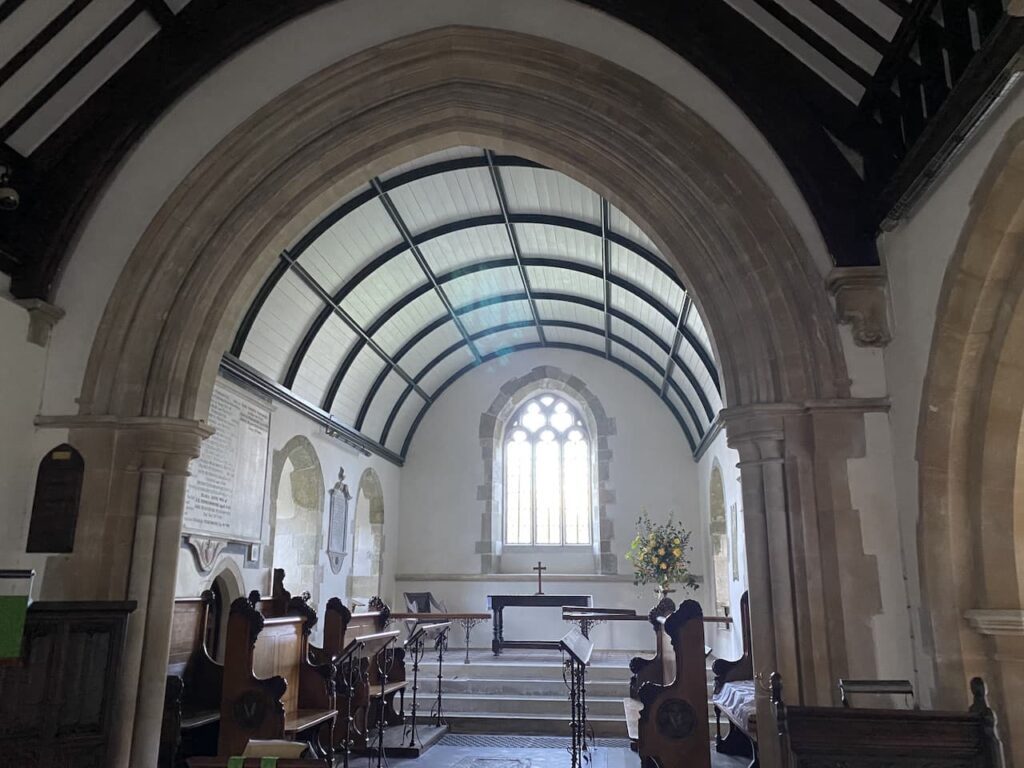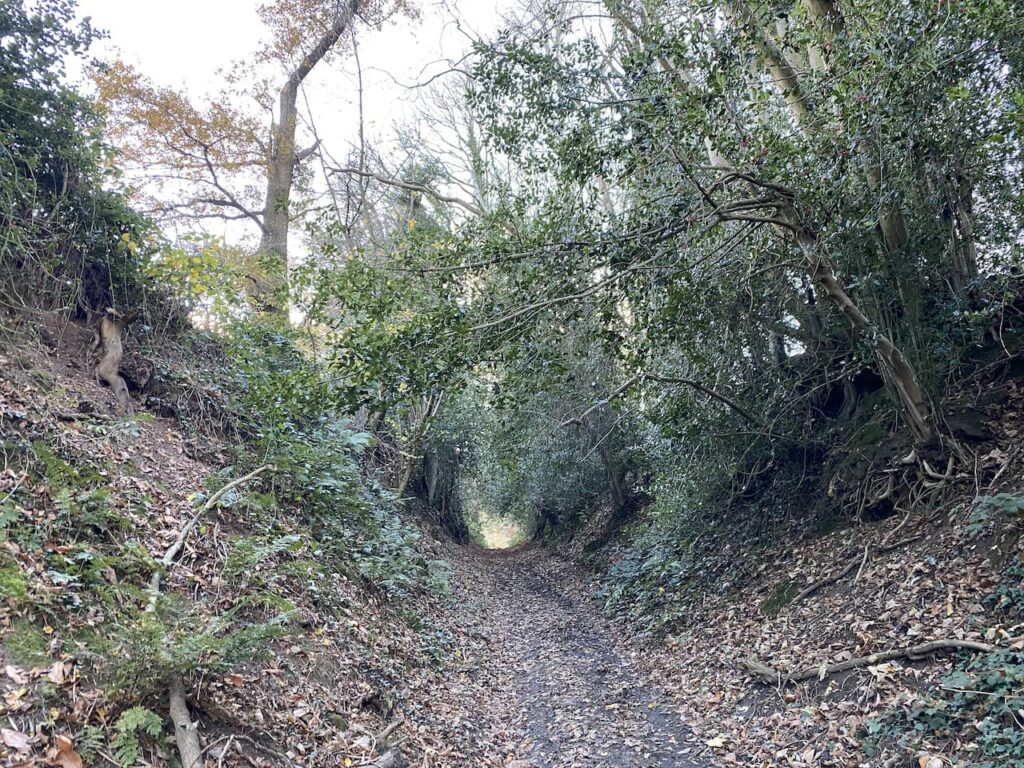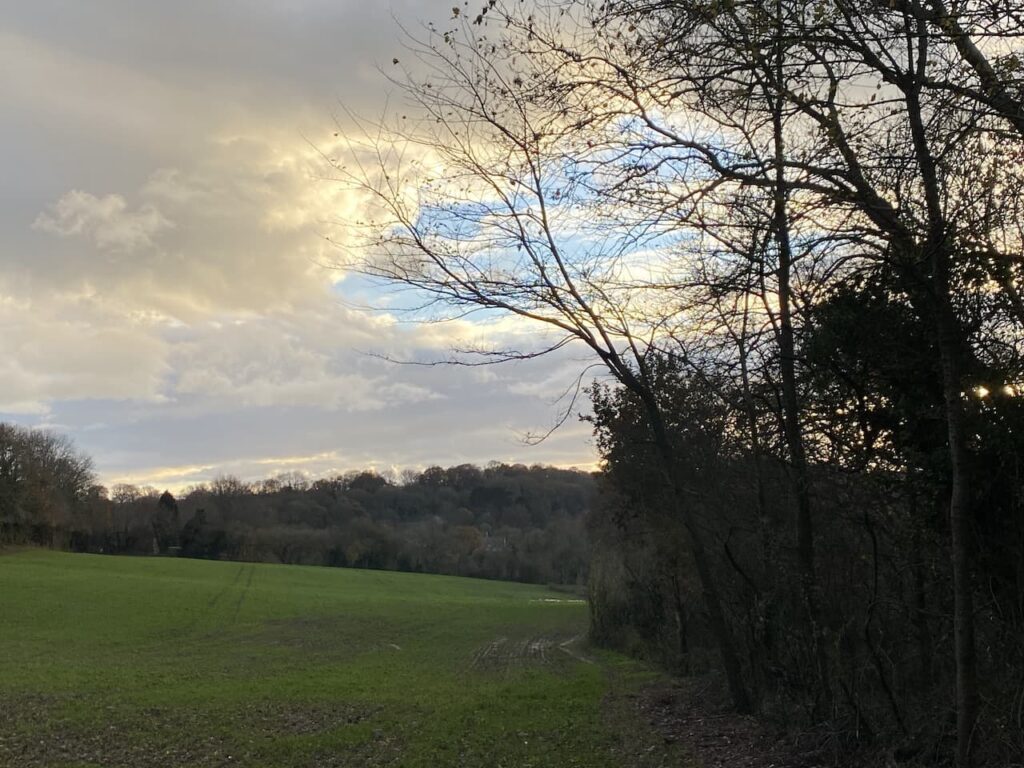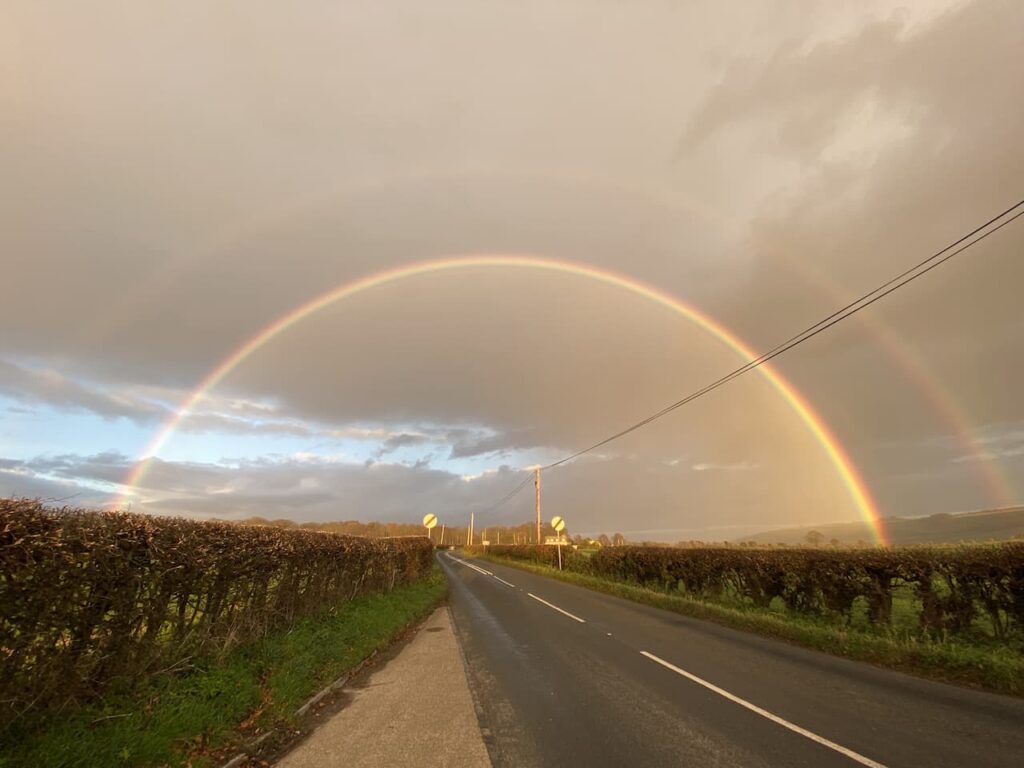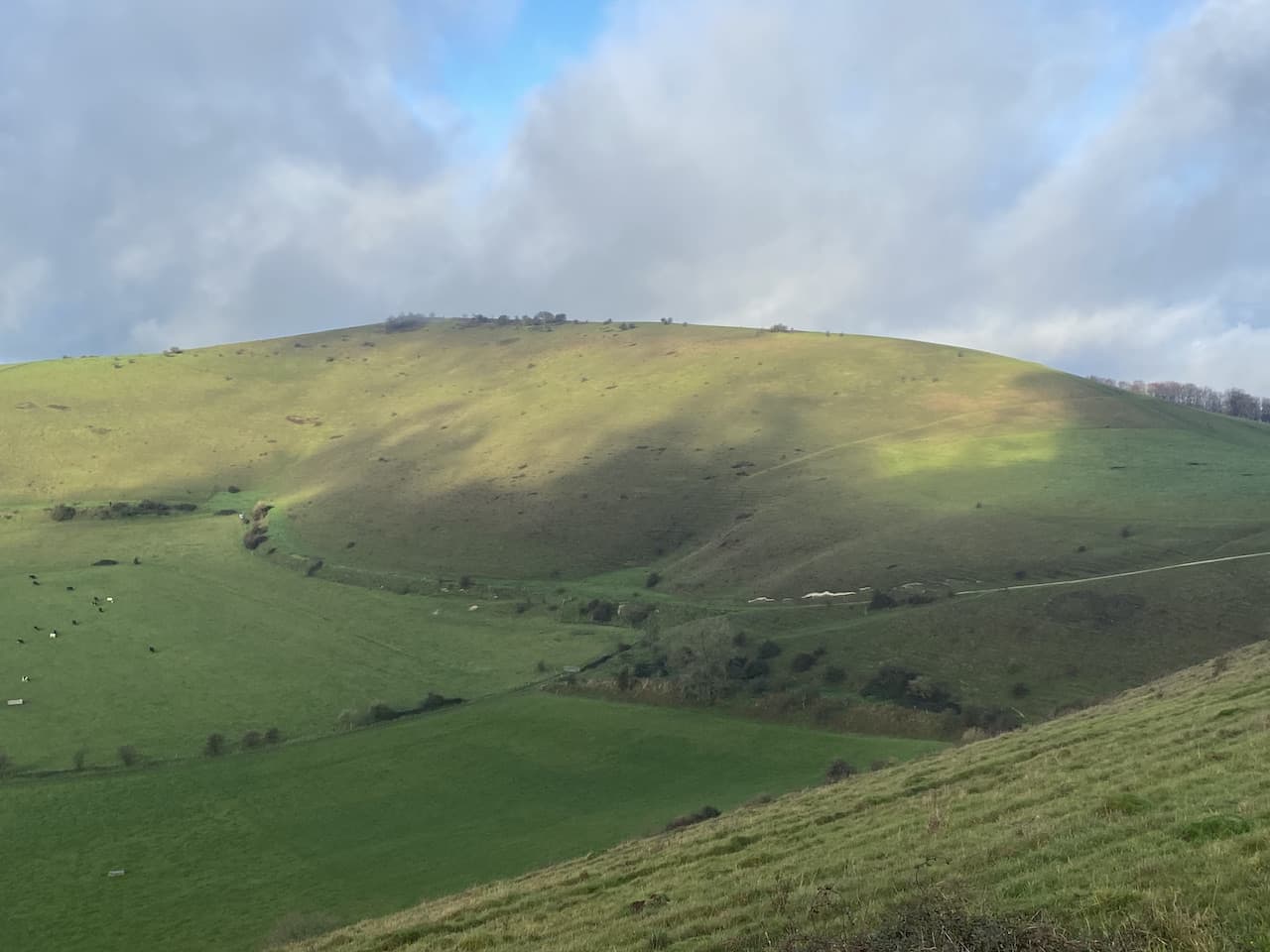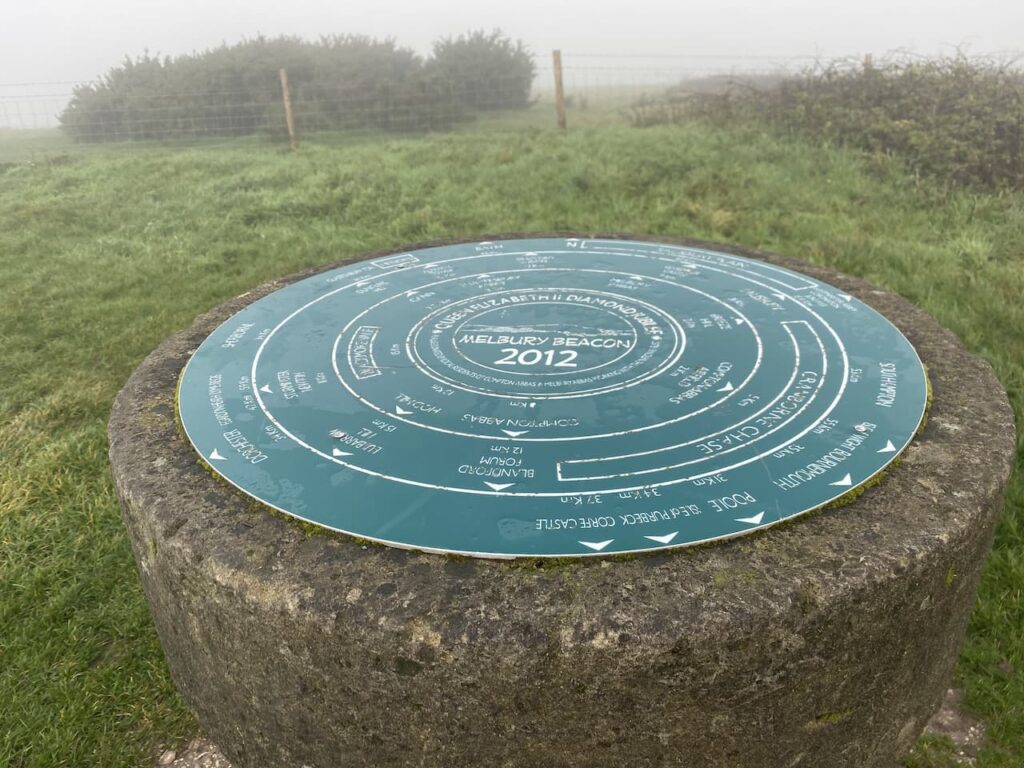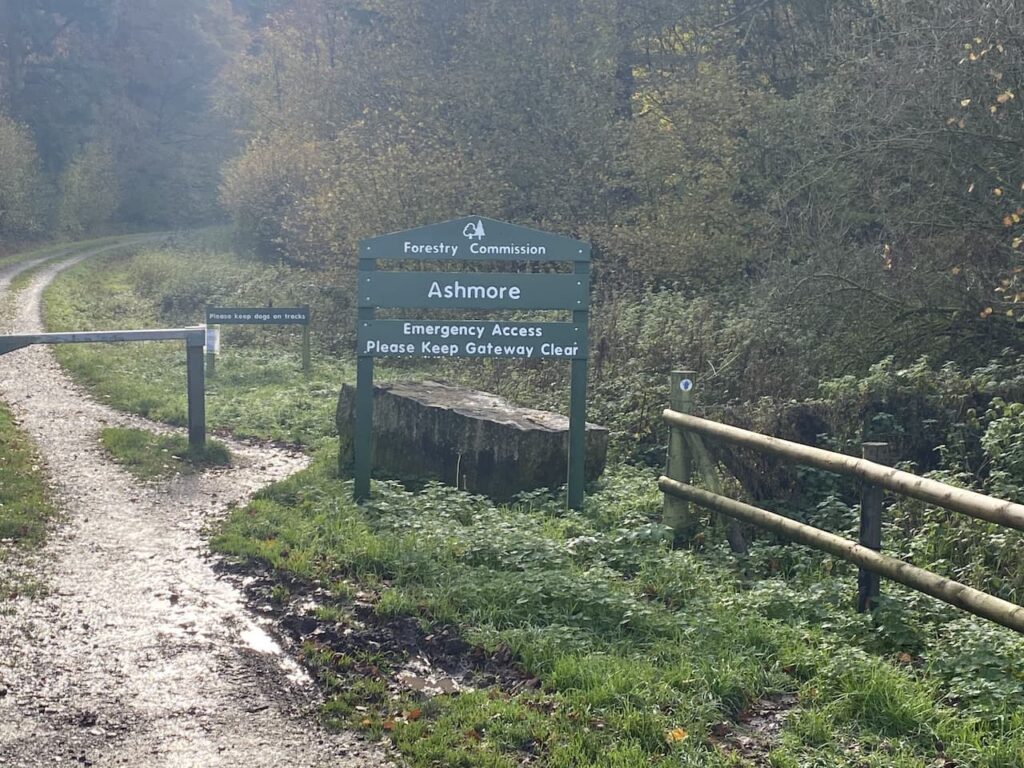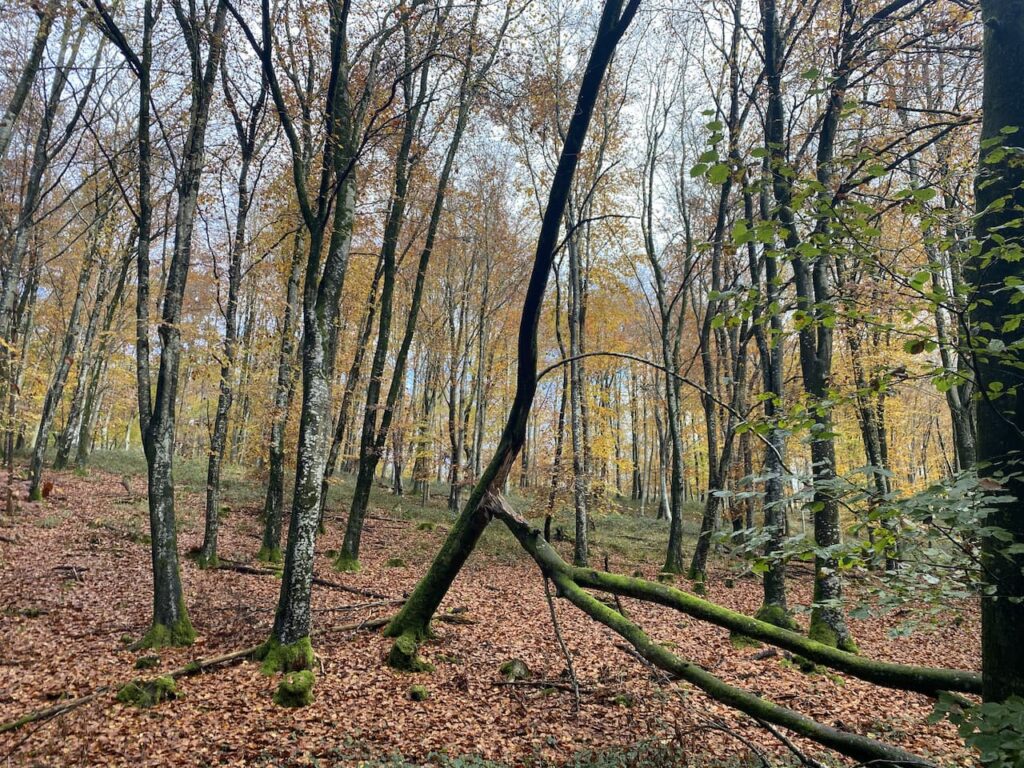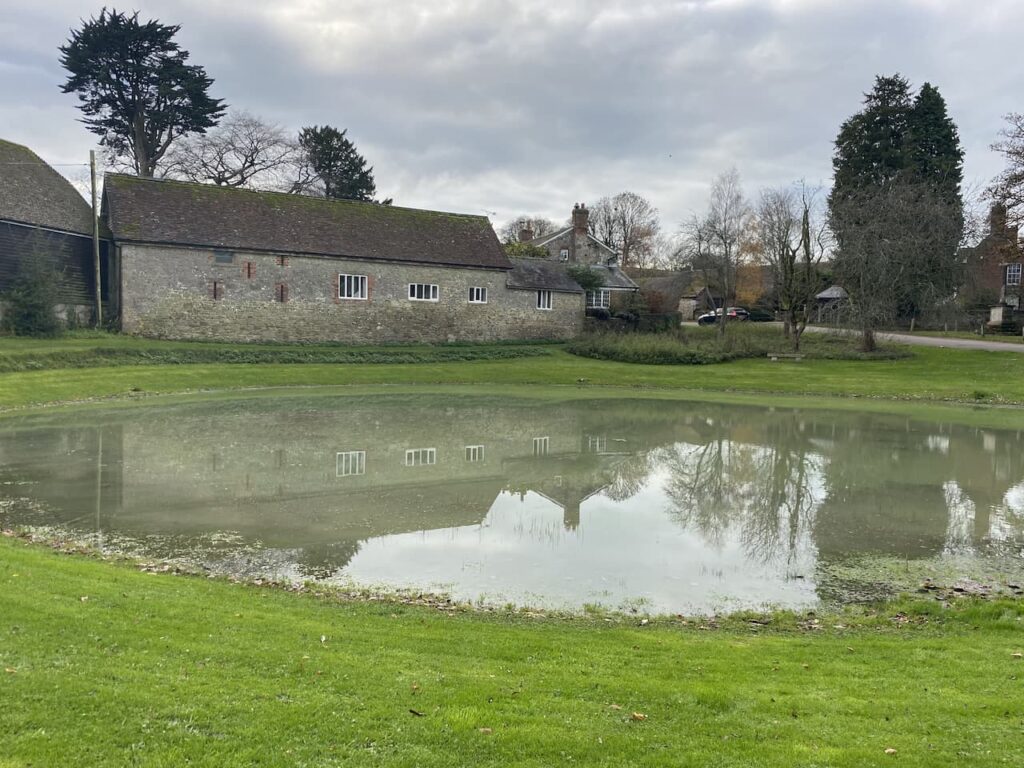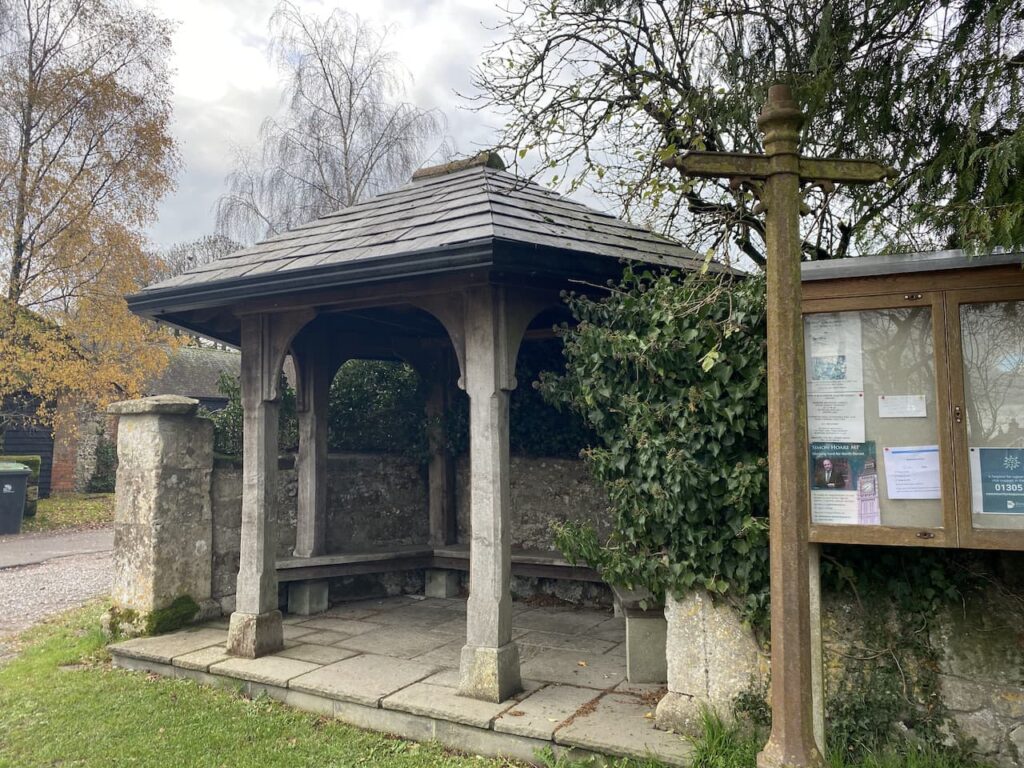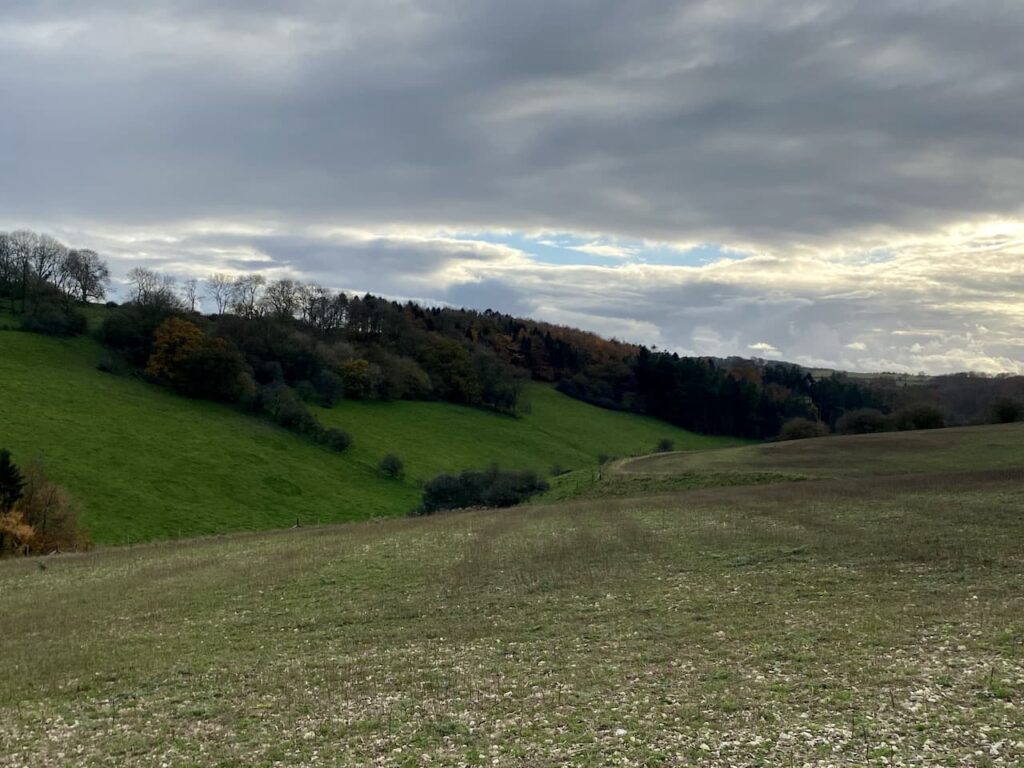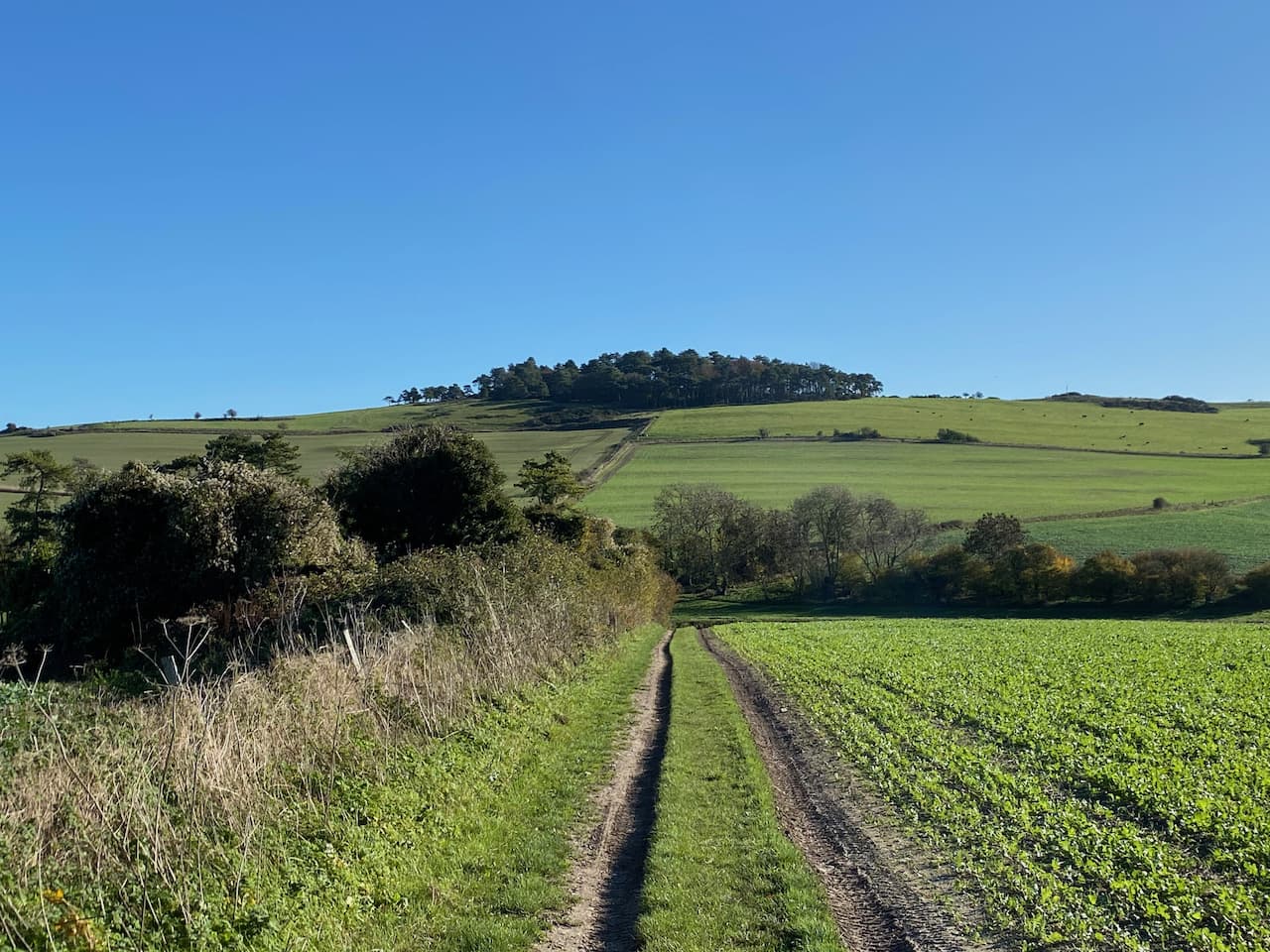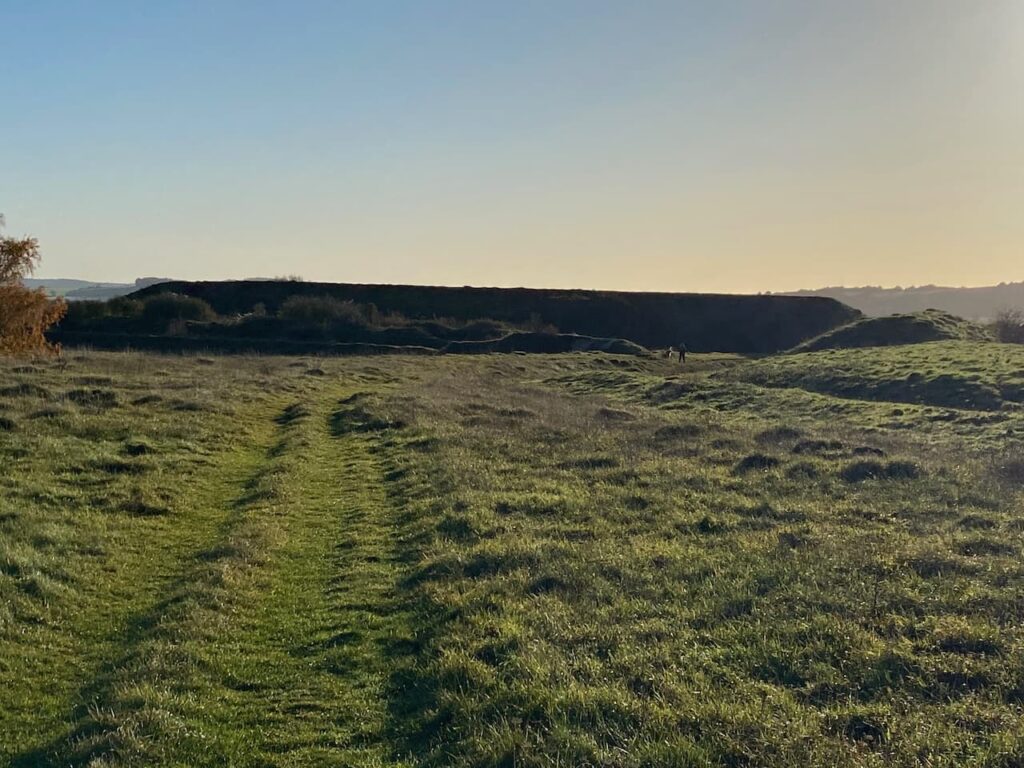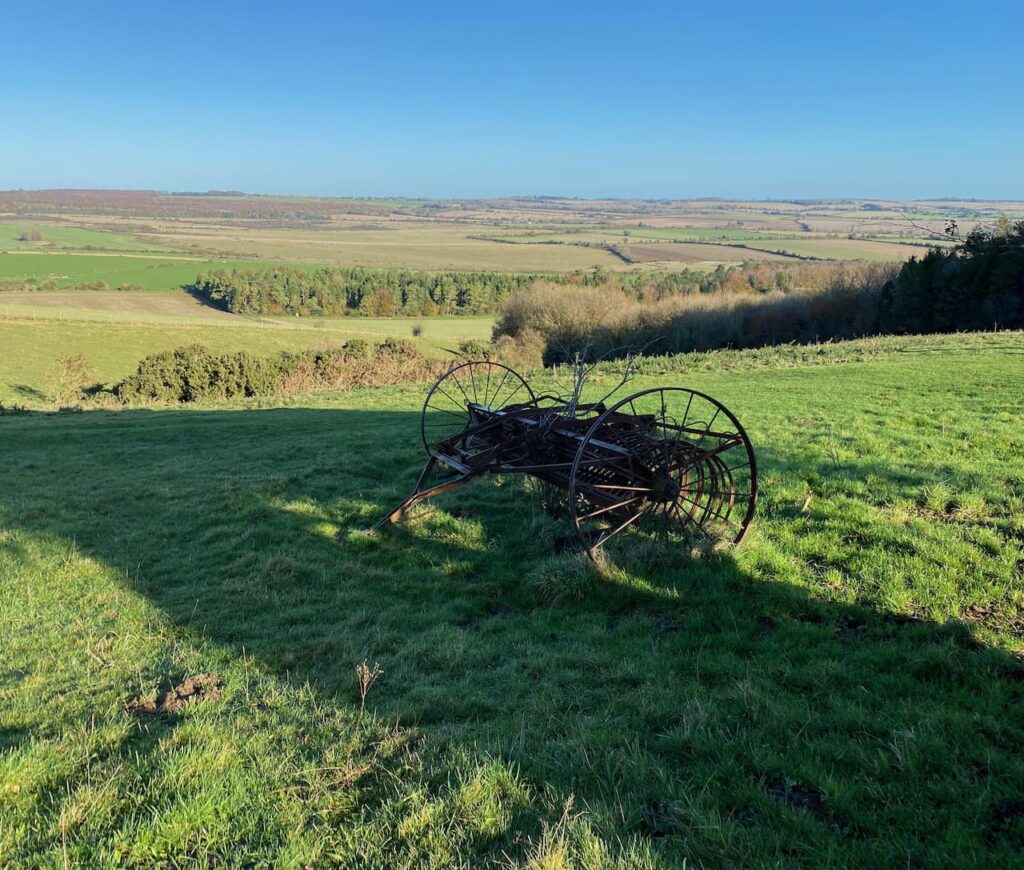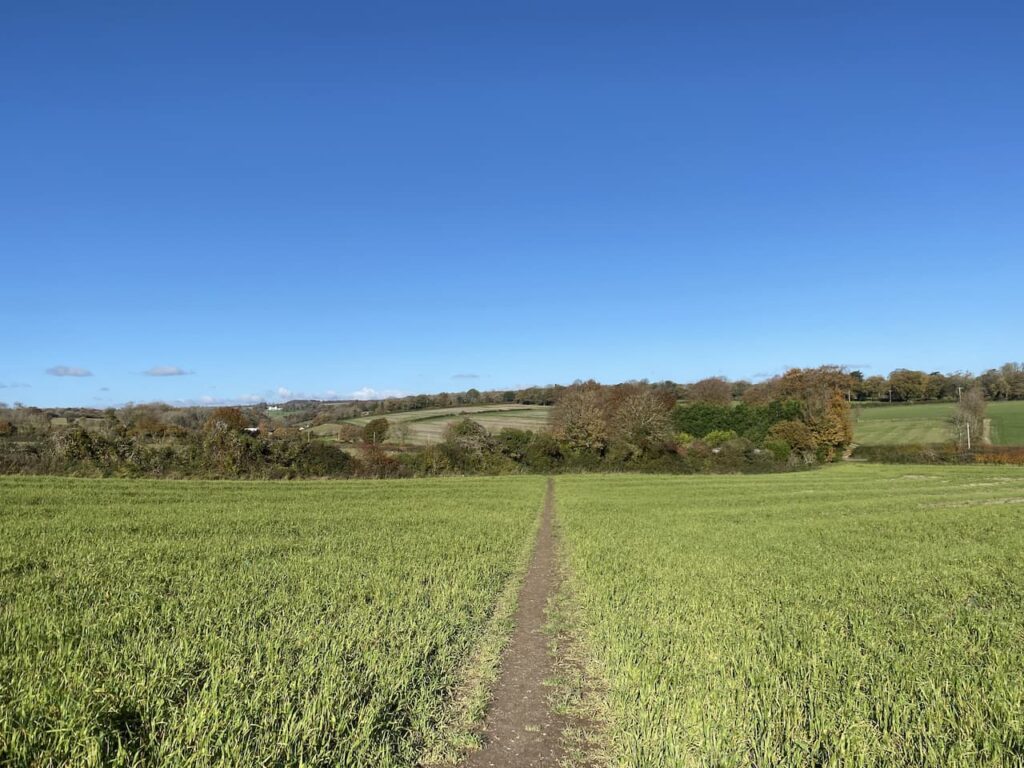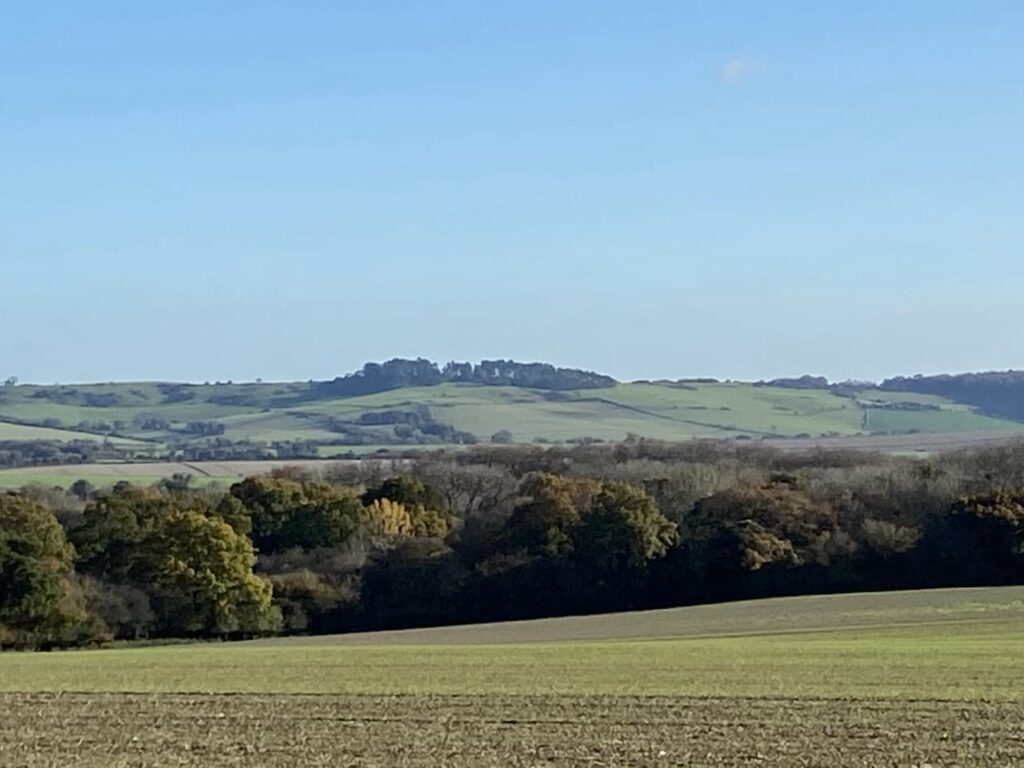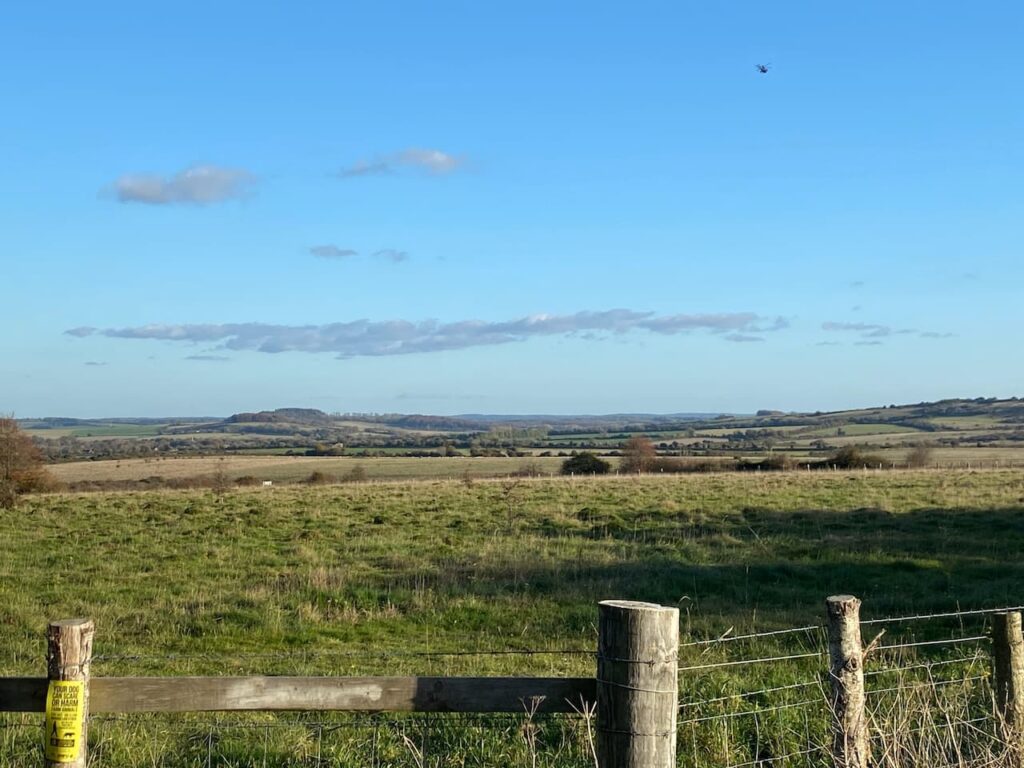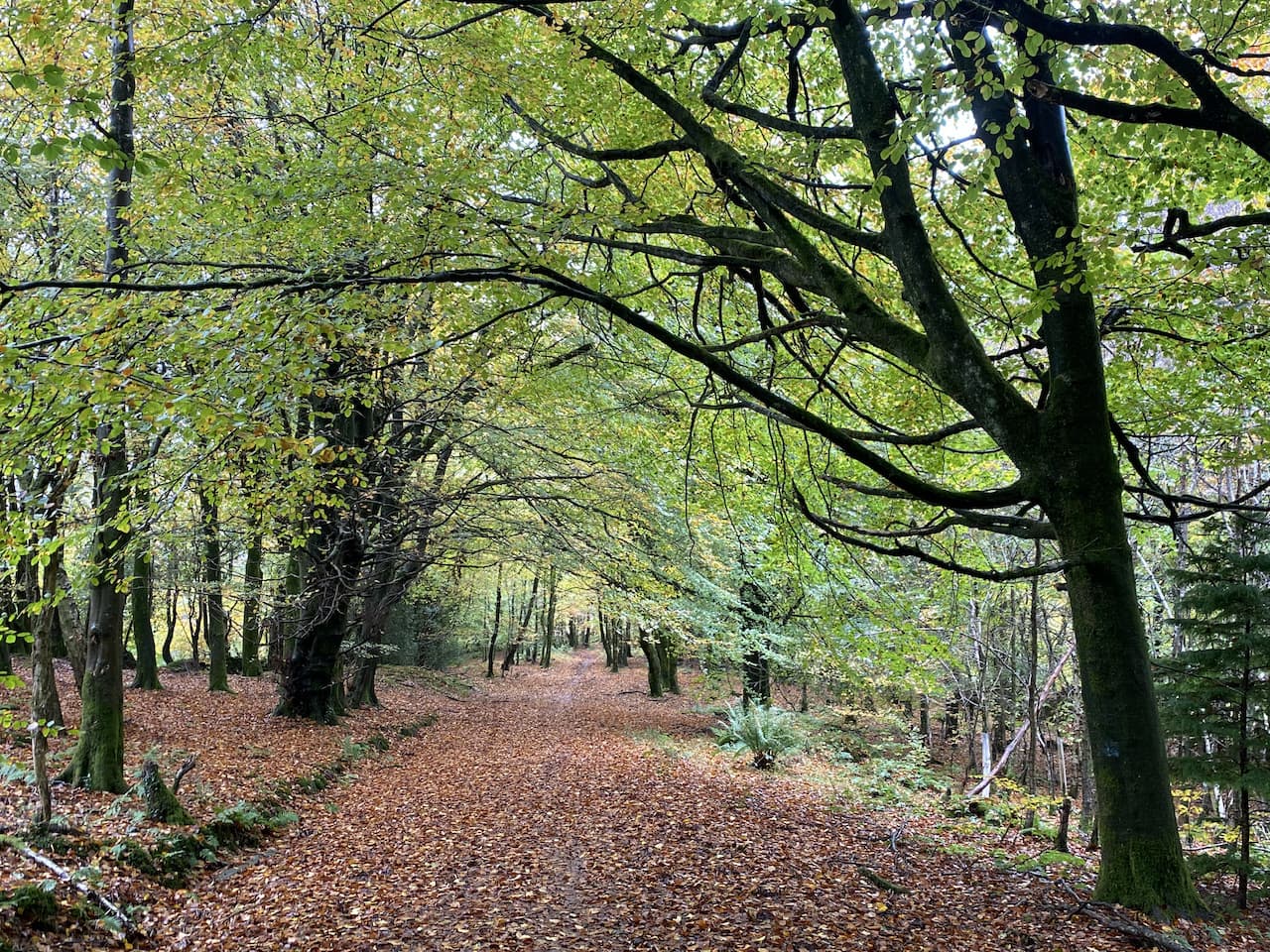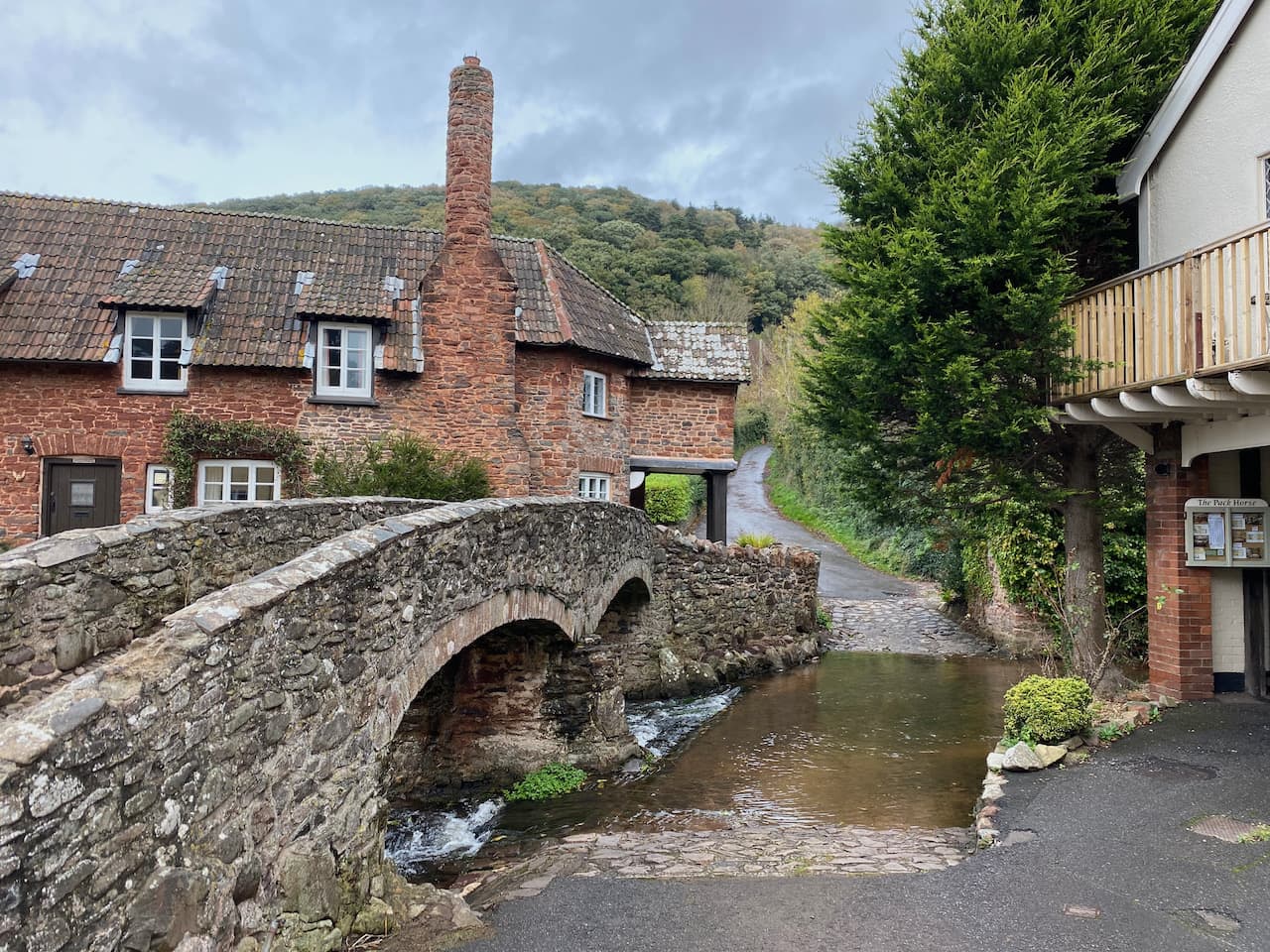It is a long time since I did a walk up the Woodford Valley. I have covered sections of it on walks but haven’t done a route going up and down the valley for well over twenty years. So today I am exploring this attractive valley with my walking pals Mandy and Gary.
The starting point for our walk is a small parking area at Stratford-sub-Castle besides the River Avon (OS Grid Ref: SU12943295). We start by heading south besides the road heading back towards Salisbury.

Within a few hundred yards we reach St Lawrence’s Church, there has been a church on this site since at least 1326. It houses a 12th century font, thought to have come from elsewhere. At various times over the centuries bits have been added, the naive was built in the 16th century and the tower rebuilt in the 17th century. Major renovations were conducted in 1904-05 and again in 1957-58. It is a church I have never been inside and that will not be rectified today because the door is locked.

We stay with the pavement until we reach a footpath along a track on the left and take this going towards Old Sarum Castle.

As the path starts to ascend we take a gate on the right to enter the site of Old Sarum and follow a well-worn path uphill towards the ramparts. As we ascend we get a cracking view of Salisbury Cathedral in the early morning mist.

On reaching the ramparts we turn left on the outer ring of the castle. There is evidence that the site of the castle was used as an Iron Age settlement in 400BC. A motte and bailey castle was built in 1069 and the site was well populated until the cathedral which had been built there was relocated to its current location two miles away. This relocation was due to a fall out between the church and the troops guarding the castle, local legend has it that an arrow was fired from the castle and wherever it landed would be the site of the new cathedral. It would not be physically possible to fire an arrow two miles, so the story has it that the arrow landed in a deer who ran until dropping at the site of the new cathedral.

Whatever the myths around this site it is clear that building the ramparts would have required a lot of physical effort. It is years since I visited the site and must return with Lynnie and look at the old remains. Nearing the entrance we drop off the rampart to go through a gate and then turn to the left on a drove and head north-west crossing a minor road and continuing towards Shepherds Corner.

This route is easy to follow, it stays with the track as it passes belts of trees. At a junction of tracks at Keeper’s Cottage we continue straight on along the bridleway.

The track now ascends Little Dunford Hill and after going through trees we get some cracking views across the valley.

At a junction of tracks, where the Monarchs way crosses the route, we keep straight ahead and a few hundred yards further on take a footpath on the left. The track passes fields and then reaches a concrete road. This road was part of the site of the old High Post Airfield, which opened in 1931 as a civil airfield, the site came a military base in World War II.

When the manufacture of Spitfires was disbursed from Woolston following the bombing of the Supermarine Works one location used was Salisbury. Various sites were commandeered around the City and sections manufactured then transported for final assembly and test flying at this airfield. My maternal Grandfather worked for Supermarine in Southampton and was moved to Salisbury to be the Foreman for the assembly and installation of the fuselage at the Wessex Garage in New Street, Salisbury.
On reaching a minor road we turn right and then very quickly take a road on the left signposted to Durnford. This road runs alongside the site of the Chemring Factory, but for years this was the location of Pains Wessex Fireworks. The road starts to descend Jubilee Hill giving good views up the valley.

As we reach the houses in Great Durnford we turn right on a footpath that heads through a field to reach a track. Here we turn left and descend to the village and make a brief diversion to visit the Norman church of St Andrew.

Returning to the road we head north through the village around the boundary of Great Durnford Manor. The road descends and then we take a footpath along a track which heads north into Ham Wood. After heading through the trees we continue along the clear track.

At a fork in the path we go right keeping with the top of the ridge and then it steadily descends to a large disused chalk pit.

We now turn and take a path heading south along the bottom of the downs until we reach a path on the right which we take and follow footbridges over branches of the River Avon.

We continue on the path to cross the main branch of the River Avon and then continue into Normanton.

At a minor road we turn left and stay with this road until we reach the lane leading to Wilsford church. There is a suitable bench here for us to stop for lunch. Refreshed we continue down the lane to visit St Michael’s church.

After visiting the church we return up the lane and then turn right onto the minor road for a few hundred yards before turning left on a track heading west and steadily uphill.

Now we go downhill and pass Springbottom Farm and then turn left and follow a path into Lake Bottom.

At a junction of paths we turn right and follow the path along the top of a field with woods to our right. Below us is Lake House. This house originates from 1578 with various additions made over the years. It was gutted by fire in 1912 and was added to in 1933. In 1990 it was purchased by the musician Sting and he is actress wife Trudie Styler.

Reaching a minor road we cross and join a track heading steadily downhill towards the River Avon. At a junction of paths we do not cross the river but stay on a footpath keeping to the west of the river to enter Upper Woodford. At a minor road in the village we turn left soon passing The Bridge Inn.

The road leads through the village and continues past the entrance to Heale House and then into Middle Woodford passing All Saints Church.

We stay with the road, which is also the route of the Monarchs Way, until we reach a footpath on the right. Here we follow the Monarchs Way markers and head across a field. We cross a minor road and continue over fields towards another minor road.

After crossing the road our path is through fields towards meadows following the way markers to reach the driveway to Little Durnford House. We turn left and follow the driveway over the river and then past a series of paddocks with a variety of animals.

The driveway leads to a minor road where we turn right and follow this road back to our starting point. We have covered 15 miles and kept dry which is a bonus for a walk in December.
You can view this 15 mile walk on OS Maps and download the GPX File Here
To follow this walk you will need Ordnance Survey Explorer Map OL130 Salisbury & Stonehenge
17th December 2020
© Two Dogs and an Awning (2020)
All information on this site is provided free of charge and in good faith and no liability is accepted in respect of damage, loss or injury which might result from it. To the best of my knowledge the routes are entirely on public rights of way or within areas that are open for public access.
Walking can be hazardous and is done entirely at your own risk. It is your responsibility to check your route and navigate using a map and compass.

